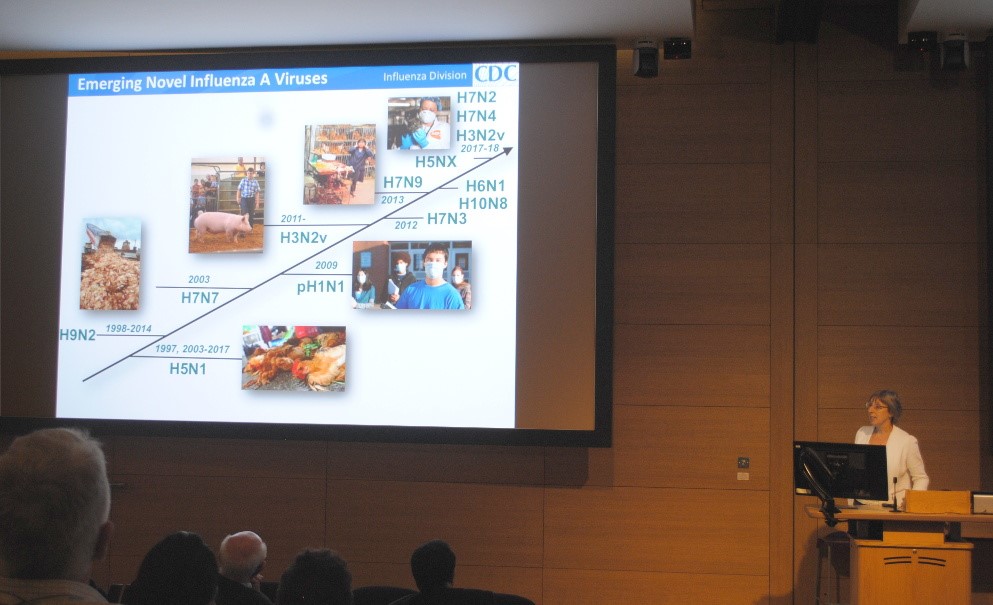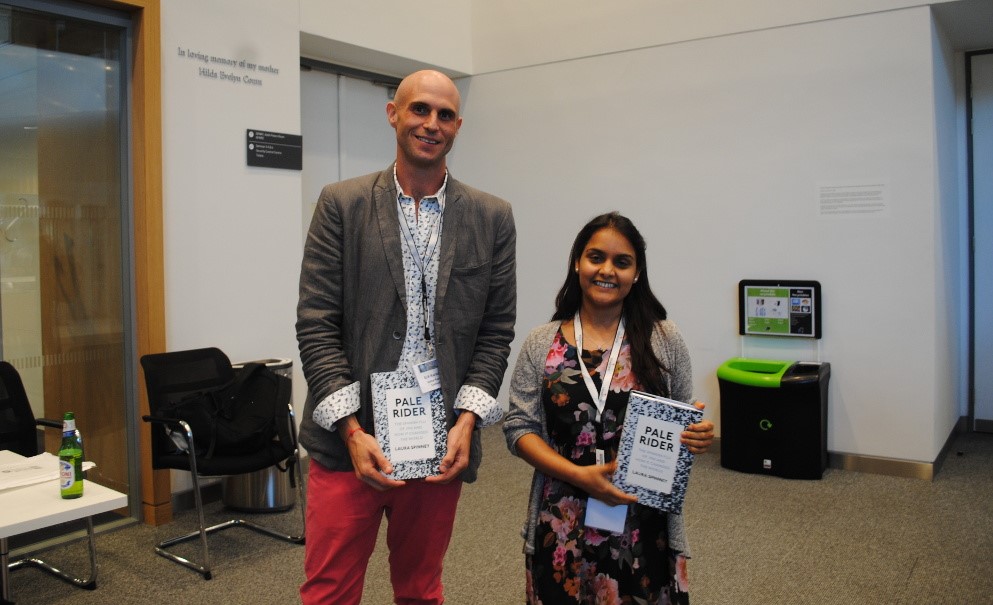|
Influenza 2018: Centenary of the 1918 Pandemic 24-26 June 2018
The Francis Crick Institute, London.
|
||||||
|
Highlights from the Spanish Flu centenary symposium
The greatest public health disaster in recorded history, the Spanish Flu, began in springtime of 1918 and developed within a few months into a global pandemic with an estimated 50-100 million deaths. By its end, the pandemic had caused a reduction of life expectancy in the US by 12 years, and killed more people than died in the First World War.
The Francis Crick Institute, the International Society for Influenza and other Respiratory Virus Diseases (ISIRV) and the World Health Organisation organised an international symposium to mark its centenary and to coincide with the onset of the pandemic in Britain in June a hundred years ago. More than 400 participants from 42 countries met to assess what we have learnt since then, to discuss how pandemic preparedness is today, and to speculate what scientific progress is needed and can be expected in the near future and longer-term. Many of the speakers and chairs included those scientists who brought about crucial progress in our understanding of influenza in recent decades, discovering how the virus infects cells and replicates, how it transmits and which animal species act as reservoirs for the generation of new pandemic viruses. The conference also looked at the other side of the battleground, how the host immune response to the virus can, on the one hand, protect against infection and, on the other, exacerbate the disease. Mechanisms by which existing and future antivirals and vaccines might work were elaborated. Another preoccupation is how to model or predict the next pandemic and how to assess the public health value of strategies to confine it. Young scientists presented their work in 35 posters, and the authors of the best two, one from Phnom Penh in Cambodia on grassroots tracking of the viruses and one from Oxford describing new broadly cross-reactive antibodies to influenza neuraminidase, received as a prize a signed copy of the book “Pale Rider” by Laura Spinney, which traces back the roots of the Spanish flu pandemic of 1918 and shows how it changed the world.
A final round of panel discussion illustrated the tremendous progress that has been made and advances on the horizon, but reminded us that no simple recipe for predicting, preventing or controlling the next flu pandemic yet exists. |
||||||


